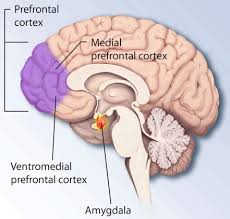
As a writer, I know from personal experience how cathartic it can be to put words on paper. This is especially true when the words represent a painful situation that I have not come to terms with yet. I also know this to be true in composing music. I can see how the painter or the sculptor can find therapy in the creation of their works as well. It must be true for the other arts as well. My primary focus here, however, is in reference to writing.
I’m going to quote some informative content I found in the publication known as UCLA Newsroom, from its Science & Technology section. Stuart Wolpert wrote the piece in 2007. The following are excerpts from his article.
“Why does putting our feelings into words — talking with a therapist or friend, writing in a journal — help us to feel better? A new brain imaging study by UCLA psychologists reveals why verbalizing our feelings makes our sadness, anger and pain less intense…
“When people see a photograph of an angry or fearful face, they have increased activity in a region of the brain called the amygdala, which serves as an alarm to activate a cascade of biological systems to protect the body in times of danger. Scientists see a robust amygdala response even when they show such emotional photographs subliminally, so fast a person can’t even see them…”
“The study showed that while the amygdala was less active when an individual labelled the feeling, another region of the brain was more active: the right ventrolateral prefrontal cortex. This region is located behind the forehead and eyes and has been associated with thinking in words about emotional experiences. It has also been implicated in inhibiting behavior and processing emotions, but exactly what it contributes has not been known.

” ‘What we’re suggesting is when you start thinking in words about your emotions —labeling emotions — that might be part of what the right ventrolateral region is responsible for,’ Lieberman said.
“If a friend or loved one is sad or angry, getting the person to talk or write may have benefits beyond whatever actual insights are gained.These effects are likely to be modest, however, Lieberman said.
” ‘We typically think of language processing in the left side of the brain; however, this effect was occurring only in this one region, on the right side of the brain,’ he said. ‘It’s rare to see only one region of the brain responsive to a high-level process like labelling emotions.’
Many people are not likely to realize why putting their feelings into words is helpful.
” ‘If you ask people who are really sad why they are writing in a journal, they are not likely to say it’s because they think this is a way to make themselves feel better,’ Lieberman said. ‘People don’t do this to intentionally overcome their negative feelings; it just seems to have that effect. Popular psychology says when you’re feeling down, just pick yourself up, but the world doesn’t work that way. If you know you’re trying to pick yourself up, it usually doesn’t work — self-deception is difficult. Because labelling your feelings doesn’t require you to want to feel better, it doesn’t have this problem.’
“Thirty people, 18 women and 12 men between ages of 18 and 36, participated in Lieberman’s study at UCLA’s Ahmanson-Lovelace Brain Mapping Center.They viewed images of individuals making different emotional expressions. Below the picture of the face they either saw two words, such as ‘angry’ and ‘fearful,’ and chose which emotion described the face, or they saw two names, such as ‘Harry’ and ‘Sally,’ and chose the gender-appropriate name that matched the face.
“Lieberman and his co-authors — UCLA assistant professor of psychology Naomi Eisenberger, former UCLA psychology undergraduate Molly Crockett, former UCLA psychology research assistant Sabrina Tom, UCLA psychology graduate student Jennifer Pfeifer and Baldwin Way, a postdoctoral fellow in Lieberman’s laboratory — used functional magnetic resonance imaging to study subjects’ brain activity.
” ‘When you attach the word ‘angry,’ you see a decreased response in the amygdala,’ Lieberman said. ‘When you attach the name ‘Harry,’you don’t see the reduction in the amygdala response.’
” ‘When you put feelings into words, you’re activating this prefrontal region and seeing a reduced response in the amygdala,’ he said. ‘In the same way you hit the brake when you’re driving when you see a yellow light, when you put feelings into words, you seem to be hitting the brakes on your emotional responses.’ ”
As a result, an individual may feel less angry or less sad.”
I find it satisfying to see scientific evidence to validate something I know to be true. I don’t mind having empirical evidence on my side either. So, write those feelings down. Write those heart-wrenching stories. Your brain will cooperate and you can move on with a little wisdom in your pocket.